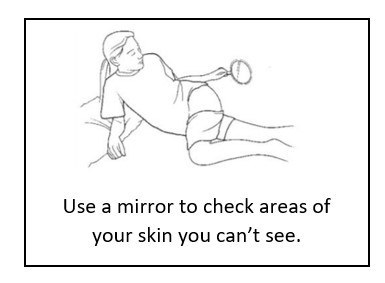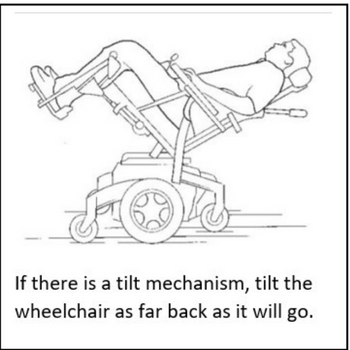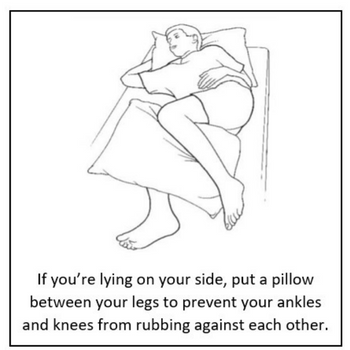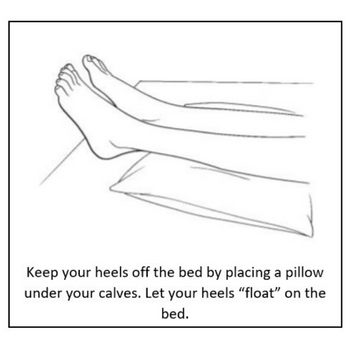Key Points
Tell your health care provider or call Telehealth Nursing (651-229-3890) if you notice any red areas that don’t go away within 20 minutes.
A pressure ulcer or bed sore is an injury to the skin and tissue. It usually happens over bony body parts (buttocks, heels, base of the spine, hips or shoulder blades). If not treated early, an ulcer can become serious and even require surgery.
Certain people are at risk for getting pressure ulcers, including anyone who:
- Needs help moving
- Spends hours at a time in bed or in a wheelchair
- Doesn’t have control of bowels or bladder
- Doesn’t eat a balanced diet and doesn’t drink enough water
- Can’t feel pain or pressure
- Has braces, casts or special wheelchair seating
People who have trouble thinking clearly or can’t feel a part of their body — such as those with spina bifida, a head injury or a spinal cord injury — are especially at risk of developing pressure ulcers.
Causes of Pressure Ulcers
Sitting or lying in one position for a long time on a hard surface, such as an unpadded chair or even a bed, can cause a pressure ulcer.
If you don’t move frequently, the skin gets squeezed between your body and the bed or chair. This squeezing slows down the blood flow to the skin and tissue. This means blood can’t deliver the nutrients and oxygen that keep skin healthy. The skin will begin to turn red. If pressure is not taken off the red spot, more damage can happen under the top layer of your skin, sometimes down to bone.

Preventing Pressure Ulcers
- Check your entire body for skin redness every day.
- Drink plenty of water.
- Eat a balanced diet.
- Keep skin clean.
- If incontinent, use a barrier cream over buttocks and groin area at every change of brief/diaper. This keeps the skin from absorbing excess moisture.
- See an orthotist for the right fit for braces, such as an ankle-foot orthosis (AFO) or spinal brace. See a seating specialist or durable medical equipment (DME) vendor for the right wheelchair seating and mattress for the bed.
- Shift your weight in bed: (See images on below.)
- Change position in bed every two hours.
- Avoid layers of underpads, briefs/diapers and sheets between the person and the bed.
- Your body shouldn’t be pulled or dragged across the bed.
- Shift your weight in the wheelchair: (See images below.)
- Change position in your wheelchair for at least 2 minutes out of every hour.
- If you are able, do a “push-up” or a lean from side to side.
- Get completely out of your wheelchair every few hours.



When to Seek Help
A red area can quickly turn into a more serious wound. Tell your health care provider or call Telehealth Nursing (651-229-3890) if redness doesn’t go away within 20 minutes.
Translations
This information is for educational purposes only. It is not intended to replace the advice of your health care providers. If you have any questions, talk with your doctor or others on your health care team.
If you are a Gillette patient with urgent questions or concerns, please contact Telehealth Nursing at 651-229-3890.
 Home Page
Home Page
